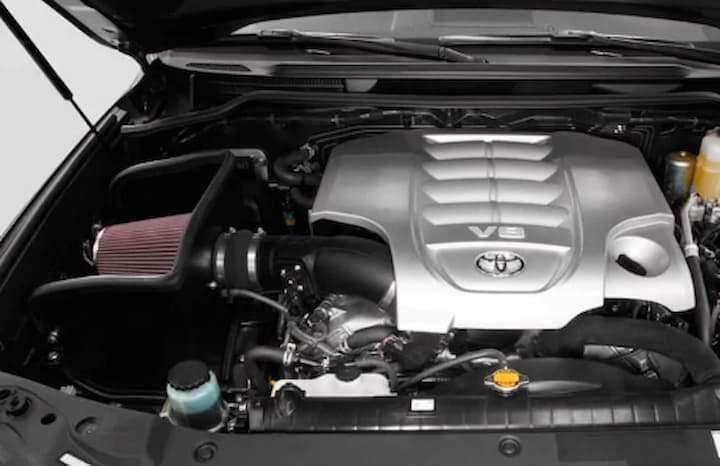Car Air Filters: Key Roles, Upgrade Signs and Benefits
Regular car maintenance and overall performance are closely linked. Timely replacement of consumables like air filters, fluids and spark plugs ensures engine health and longevity. The parts also have a significant impact on how your car performs, especially when paired with bespoke upgrades like tweaked suspension, customizable exhaust systems, and stickier rubber. Often overlooked in this network of parts and upgrades is the humble car filter.
What Do Car Air Filters Do?

Air filters might seem like minor and often unimportant car parts, but they impact how your car drives in numerous ways. A reliable engine air car filter is located at the front of the engine bay, either in its round or rectangular airbox or sitting atop the carburettor in older vehicles. Its purpose is the same in all vehicles – to protect the engine from outside contaminants, including dirt, debris and water- and prevent internal engine damage leading to premature wear and expensive repair bills.
Another role is ensuring correct airflow into the engine and meeting combustion needs to produce adequate power. Clean filters not only filter atmospheric air but also have high flow rates that ensure optimal air-fuel mixtures. This allows engines to work optimally at any load. Alternately, dirty and clogged filters limit how much air reaches the combustion chamber, affecting power output, acceleration and fuel consumption. Seriously clogged and forgotten filters are also the cause of severe engine issues, ranging from misfires to corrosion.
Signs You Need a New Filter
- Reduced acceleration and power loss: Clogged, dirt and damaged filters reduce airflow to the engine, thereby limiting how much oxygen the engine has to combust fuel. This results in evident power loss, especially when on the throttle.
- Higher fuel use: Off air-fuel ratios and low air volume mean the ECU compensates by spraying more fuel to meet engine load needs, leading to rich fuel mixtures and an obvious increase in fuel consumption. Black exhaust smoke from the tips is another giveaway sign.
- Strange engine noises: Without enough air, the engine will start to struggle, puffing up coughing and sputtering noises. Not only does this hurt performance, but it also leads to issues like misfires or overheating.
- Illuminated “Check Engine” light: The dreaded check engine light can mean dozens of things. The ECU picks up irregular airflow intake volumes, pressure and temperatures (among other measurements), pointing to air intake problems and more often, a clogged or dirty air car filter.
- Dirty, cracked, clogged and damaged filters: Regular inspections don’t hurt. Remove the fasteners enclosing the air box and inspect the condition of the air filter. Clean factory and replacement units are white, without visible dirt or damage.
Considering Replacements
Engine air filters can be categorised by the filtering media that does the cleaning, the form factor to fit the factory air box, and whether they are oiled and reusable or single-use dry filters.
Filtering Media
Depending on the filtering media, air filters for cars come as paper (cellulose), foam, cotton gauze or synthetic types. Paper filters are the most common and possibly what’s in your car. They’re made of cellulose fibres that offer good filtration for factory engines and good airflow. These last between 15,000 and 30,000 kilometres and should be changed within two years.
Reusable, oil-wetted open-cell polyurethane foam filters are ideally used in SUVs, utes and 4WDs. They’re good at trapping finer dust particles while still allowing for good airflow. Cotton gauze types are marketed towards racing and performance applications, with airflow the main priority.
Constructed of oiled cotton layers sandwiched between aluminium mesh, these filters are reusable and washable, and often last the lifetime of the vehicle. Tradeoffs are the reduced filtration, meaning they’re not adequate for vehicles with sensitive sensors. Synthetic filters are the newest addition in production vehicles, offering significantly better filtration and higher resistance to moisture, heat and chemicals than standard paper types.
Form Factors
Shapes determine engine and airbox compatibility. Flat, flexible panel filters are the most common. They’re enclosed in a flexible polyurethane frame and are easy to install or replace. Rigid panel types offer more uniformity and consistent airflow and filtering performance with outer gaskets providing coherent sealing.
Most are of the synthetic type in terms of filtering media. Conical filters are usually in cotton gauze, often larger in size and part of elaborate air intake systems in modified and performance vehicles. Radial seal and conical filters are more commonly seen in trucks and commercial vehicles, with good filtration owing to superior sealing.
Can I Replace My Single-Use Paper Filter with an Oiled Cotton Gauze Filter?
Paper and synthetic filters are the usual factory replacements recommended by most car manufacturers. They’re cheaper for one simple reason – they’re not reusable, so once clogged or dirty, you’ll want a clean replacement to ensure proper engine performance. If you’re considering other engine upgrades, like cold or short ram air intakes and matching performance exhaust systems to boost power output, then oiled and reusable foam and cotton gauze filters are viable options.
These will increase airflow, meaning a more responsive car. They do, however, require frequent cleaning and re-oiling to work at their best. As mentioned, a drawback is that they can affect engine longevity with limited filtration, meaning more dust and dirt can pass through. Most also require an ECU remap to prevent faulty readings from sensitive MAP and MAF sensors.







